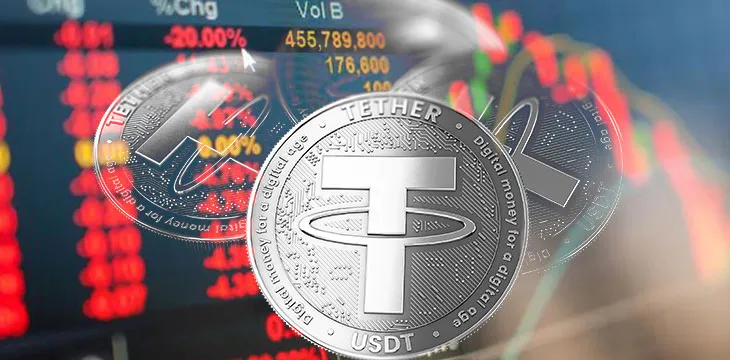|
Getting your Trinity Audio player ready...
|
Tether may currently be stable and may have seen its value return to be even with the U.S. dollar, but this may not last long. The stablecoin held 94% of the market at the beginning of 2018—with only two other competitors—and continues to lose ground. Now with eight serious stablecoins in the market, Tether’s market dominance lies at only 74% and could fall even further.
It seems like everyone wants to launch a stablecoin these days. There is the USDCoin from Circle, Paxos, TrueUSD and even Gemini Dollars. Even the Huobi exchange has gotten in on the fun, launching its HUSD stablecoin. On the surface, they appear to be solid as they’re backed by physical assets such as dollars or gold, but we have already witnessed how easily it is to see a stablecoin come unglued. Not too long ago, Tether saw its price break free from the U.S. dollar, falling at one point to $94.
This past October, the co-founder of CoinCorner, Danny Scott, showed how easy it was for the stablecoins to not hold their value. He said at the time, “This is because they are openly traded on exchanges based on the supply and demand, meaning their price can fluctuate if people are willing to pay less or more for the currency. For example, GUSD (Gemini dollar) was pegged at $1 and actually hit $1.18. Similarly, USDT (Tether) which is pegged at $1 has fluctuated over time and is currently trading at $0.96. So do we think stablecoins are here to stay? Only time will tell, but for now we are not committing to them.”
Tether has had to deal with a series of issues that may have contributed to its decline among stablecoins. It has repeatedly refused to release audits of its holdings, stating that it would be too difficult (even though other stablecoins readily acknowledge that they can provide the data). Its new banking partner, Deltec out of Brazil, is facing an investigation for its possible involvement in a money-laundering scheme. There have also been concerns raised that the stablecoin was used to manipulate Bitcoin Core (BTC) prices last year.
The case for stablecoins is tenuous, at best. While all cryptocurrency options are still young and the industry needs to be developed, there isn’t much call for an option that can both show volatility on its own, as well as on the asset which backs it.

 08-23-2025
08-23-2025 





